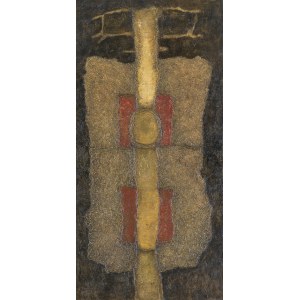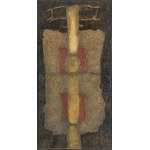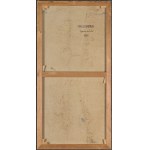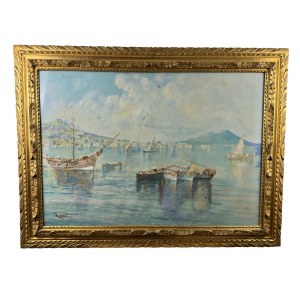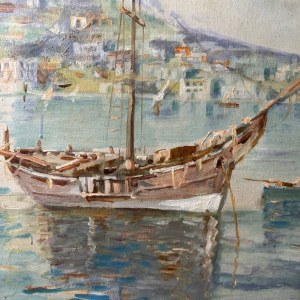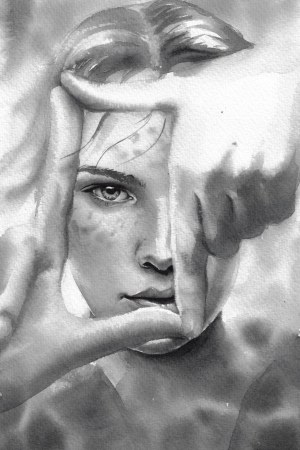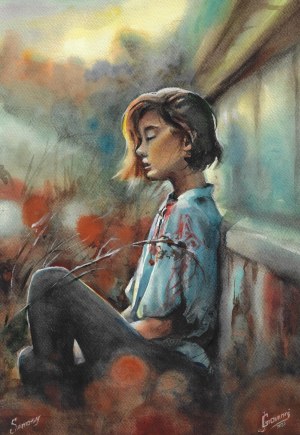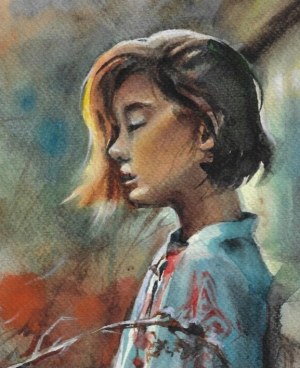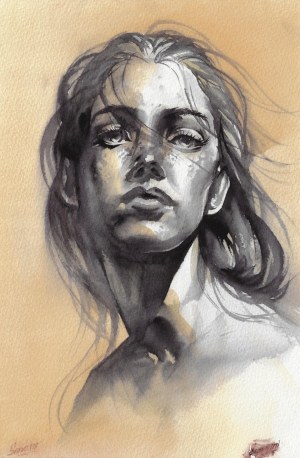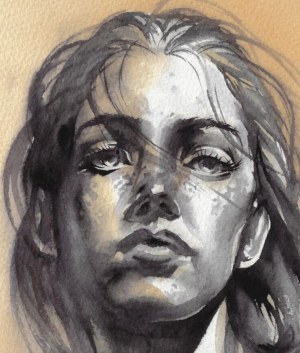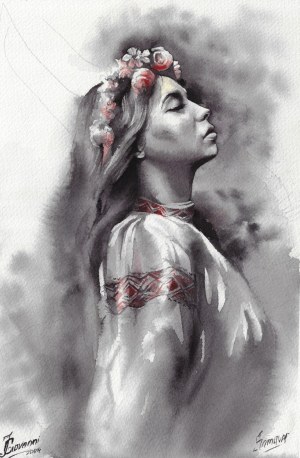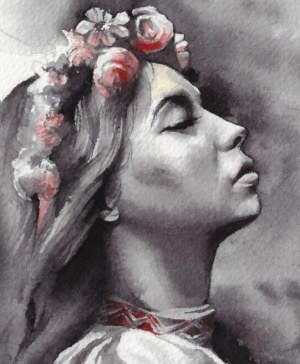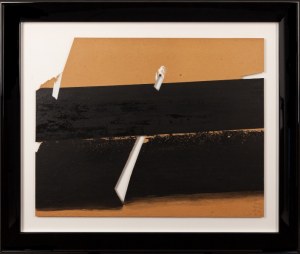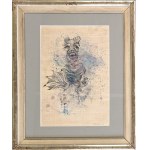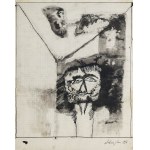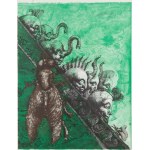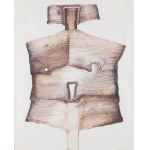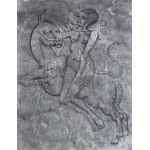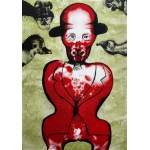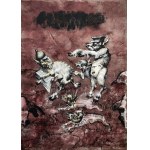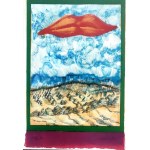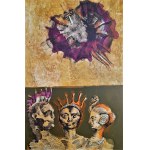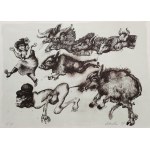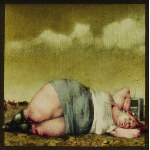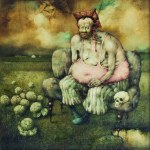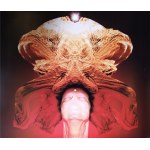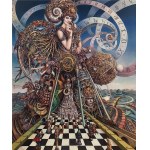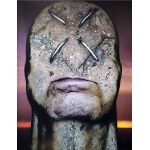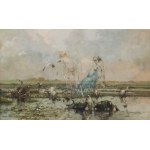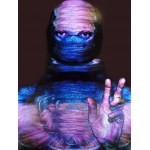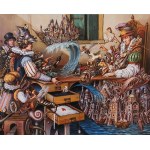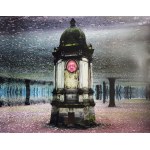122.0 x 61.0 cm - oil, canvas signature p.d.: LEBENSTEIN 60
Sign. on back on canvas p.g.: JAN LEBENSTEIN | figure axiale | 1960
p.d. stamp depicting a palette with brushes
The Axial Figures series brought Lebenstein - a young artist at the time - international acclaim. In 1959, he was awarded the Grand Prix at the first Biennale of the Young in Paris. Another important step on the artistic path was an exhibition in October 1961 at the Musée d'Art Moderne de Ville de Paris and then a solo exhibition in the US at the Chalette Gallery in New York in March/April 1962. The Axial Figures presented at the exhibitions were appreciated by French and American critics. "Dramatically decorative" and "immensely moving" were just some of the terms used by John Canaday in the pages of The New York Times to describe the Polish painter's axial figures. According to him, it is no longer just an exhibition - it is a spectacle, a mystery. French critic Jean-Albert Cartier, writing about Lebenstein's exhibition at the Musée d'Art Moderne de Ville de Paris, stated: his work requires the amateur to be silent, patient and reflective. One has to spend a lot of time to get used to this fossilized world, these tracks, these skeletons that have emerged from undefined places and eras and that disturb us with their presence. Fixed in layers of paint, these relics of some ragged, dismembered civilization are like echoes of an inner drama in which death constantly makes itself known.
Based on an axial premise, the composition of each of Lebenstein's paintings is subject to the rules of a peculiar geometry of space, giving these works a certain rigor. Nocturnal birds, charred monsters, desert terrains stretch out implacably, glued to the surface of the canvas on either side of the centerline. (...) This tense, hermetic, disturbing work, however, breathes mystery and poetry. It has something compelling about it that makes it impossible for us to pass by it indifferently. Lebenstein's dedication, which speaks well of him, is the complete opposite of the idealless art practiced by most artists of his generation. "The value of life consists in developing one's possibilities," he said, "regardless of any competition; what matters is awareness. (Jean-Albert Cartier, review of Lebenstein's exhibition at the Musée d'Art Moderne de Ville de Paris, in Combat, September 25, 1961, quoted in: Jan Lebenstein and Criticism. Essays, Reviews, Memoirs, Selected and compiled by Andrzej Wat, Danuta Wróblewska, Warsaw 2004)
♣ to the auctioned price, in addition to other costs, a fee will be added, resulting from the right of the creator and his heirs to receive remuneration in accordance with the Act of February 4, 1994 - on Copyright and Related Rights (droit de suite)
Jan Lebenstein (Brest Litovsk 1930 - Krakow 1999) studied painting at the Academy of Fine Arts in Warsaw from 1948 to 1954 under Prof. Eugeniusz Eibisch and Artur Nacht-Samborski. In 1955 he took part in an exhibition at the Warsaw Arsenal. A friend of Miron Białoszewski during his studies, he showed his first solo exhibition in 1956 at the Tarczynska Theater. In 1959, he won the Grand Prix de la Ville de Paris at the First Biennale of the Young in Paris, and moved to Paris permanently that year. After the series of "drawn figures" (on millimeter paper) and "hieratic figures" from 1955-1958, he paints a series of "axial figures" (1958-1962), which he exhibits in Paris and the USA. At the same time, in 1960, he starts drawing "carnets," a kind of diary, which in the future will provide the motifs used in the paintings. In 1964-1965 he paints "Bestiary," a series of textured, archaic creatures reminiscent of prehistoric excavations. Immediately after, he introduces human and fantastic figures into his paintings, acting out scenes neither mythological nor from a dream, often infused with eroticism. In 1970, he designs stained glass windows for the Centre du Dialogue in Paris. In 1971 receives French citizenship 1974 creates gouaches inspired by George Orwell's Animal Farm. In 1976-1989 he creates exclusively in gouache and pastel, taking up mythological themes and those taken from the Bible: cycles of illustrations to the Book of Job (published in 1979) and the Apocalypse (published in 1986) in new translations by Czeslaw Milosz. In 1989 he returns to oil painting (series "Pergamon"). The artist received, among others, the Alfred Jurzykowski Foundation Award in 1976, the Warsaw Archdiocese Museum Award in 1985, the Jan Cybis Award in 1987.
Recently viewed
Please log in to see lots list
Favourites
Please log in to see lots list



